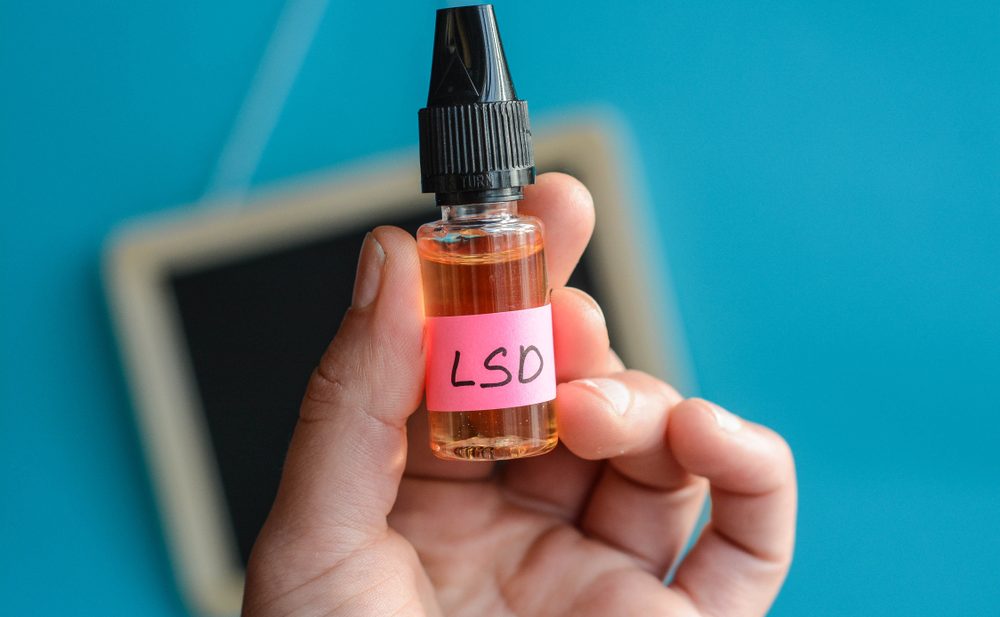- September 1, 2024
- by Shalini Murmu
- Addiction
In recent times, a subtle transformation has been simmering among the younger crowd—one that involves tiny doses. You might have come across it on social platforms, in light-hearted casual conversations, or maybe even thought about it yourself: microdosing. Consuming minute quantities of psychedelics like LSD or psilocybin is done to promote creativity, improve mental focus, or to simply brighten your mood. The attraction is apparent—picture feeling more concentrated and imaginative without the hazards of a full-blown trip. With this movement gaining traction, particularly among millennials and Gen Z, it prompts us to consider: Is microdosing genuinely the amazing solution it’s claimed to be, or are there hidden hazards we aren’t talking about?
Microdosing has grabbed the interest of many, especially in high-energy settings like tech startups, where the demand to excel and innovate is unyielding. A tiny, nearly undetectable dose of a psychedelic is frequently viewed as a way to keep pace with the expectations of contemporary life, without the shame or legal complications linked to recreational drug use. It’s a trend that’s spread like wildfire, driven by accounts of people who assert their lives have been altered by this seemingly innocuous practice.
The emergence of microdosing has also been heightened by social media, where influencers and thought leaders praise its advantages, depicting it as a sort of secret tool for the modern-day worker. The message is straightforward: microdosing isn’t just secure—it’s a clever option for those aiming to get ahead. As a result, it is clear why a larger and larger group of young adults is gravitating towards this behavior, looking to acquire an upper hand in an increasingly cutthroat world.
But there’s a crucial aspect to note: though microdosing might come off as a trivial, or even helpful, endeavor, the actual circumstances are far more elaborate. The rising popularity of microdosing has been accompanied by an astonishing absence of thorough discussion about its possible downsides. Sure, the stories are persuasive—who wouldn’t want to feel more inventive or focused? But what about the risks that aren’t being addressed? The potential for dependency, the effects on mental health, and the unknown long-term consequences are just a few of the worries that often go overlooked in the excitement surrounding this trend.
Common Substances Used In Microdosing
While microdosing might appear to be a subtle, harmless act, the truth is that it often includes powerful, mind-altering substances that carry considerable risks, especially for those with a background of substance abuse or who are currently in addiction recovery. Let’s take a closer look at the substances most commonly used in microdosing:
- LSD (Lysergic Acid Diethylamide): Perhaps the most recognized psychedelic, LSD is a strong hallucinogen that has been popularized in microdosing communities for its alleged ability to boost creativity, focus, and overall mood. However, it’s crucial to remember that even in microdoses, LSD can still modify brain chemistry and lead to unpredictable results, particularly for those susceptible to addiction or mental health challenges.
- Psilocybin: Found in specific species of mushrooms, psilocybin is another psychedelic often utilized in microdosing. It’s been lauded for its potential to evoke feelings of bliss and connectedness, but like LSD, it comes with dangers. People with a history of drug addiction or who are on an addiction recovery journey need to approach this substance with extreme care, as even tiny amounts can trigger cravings or lead to a relapse.
- Ketamine: Once created as a medical anesthetic, ketamine has entered the microdosing scene, notably for its anticipated effects on depression. That said, ketamine is a potent substance with a high risk of misuse. In fact, repeated use can lead to microdosing addiction, where the person becomes reliant on these small doses to function, ultimately resulting in serious cognitive and psychological problems.
- MDMA (3,4-Methylenedioxymethamphetamine): Referred to commonly as ecstasy, MDMA is now being explored in microdosing to boost mood and enhance social interactions. However, MDMA is a stimulant that influences serotonin levels in the brain, and even in microdoses, it can lead to significant neurochemical imbalances over time, particularly in those who already face challenges with addiction.
Potential For Neurochemical Disruptions
The potential hazards are linked with long-term microdosing, particularly the hazard of neurochemical disruptions. The brain is an exceptionally intricate organ, and even small, regular amounts of psychedelics can disturb its fragile equilibrium.
Over an extended period, ongoing microdosing might induce shifts in neurotransmitter concentrations, such as serotonin, dopamine, and norepinephrine, essential for emotional balance, thinking processes, and holistic mental well-being. For someone already fighting addiction or who has a background of substance abuse, this disruption could be especially perilous, leading to deteriorating mental health conditions or triggering a relapse.
Furthermore, the cumulative impact of microdosing over a prolonged duration is still largely uncertain. What we do understand is that the brain’s neurochemistry is finely tuned, and even slight disruptions can have considerable repercussions. For individuals in addiction recovery or those who have battled substance abuse, these hazards are intensified.
Signs You Are Getting Addicted To Microdosing
As microdosing continues to rise in popularity, especially among young professionals and creatives, it’s essential to recognize when this seemingly innocuous practice begins to cross the line into dependence. The concept of taking small, controlled amounts of psychedelics like LSD or psilocybin might sound like a safe way to boost productivity or creativity, but the truth is that microdosing dependence can develop more easily than many comprehend.
One of the initial signs that you may be developing a dependence on microdosing is the increasing regularity of your doses. At first, you might have started microdosing just once or twice a week, but as you begin to notice subtle enhancements in your mood or concentration, the urge to increase your dosing schedule can be intense. You might convince yourself that just a bit more will help you get through a particularly challenging project or meet an important deadline. But what starts as an occasional boost can quickly evolve into a daily routine.
Another warning sign is the growing reliance on microdosing to function normally. You might discover that tasks you used to manage easily now seem overwhelming without that small amount of a substance to help you get through the day. This reliance can be both physical and psychological. Physically, your brain may start to desire the neurochemical shifts brought about by microdosing. Psychologically, you might begin to think that you simply can’t perform at your best without it. This is a perilous path, as it closely resembles the early stages of substance addiction, where the substance becomes crucial to daily life.
Alterations in behavior and priorities are also unmistakable signs of microdosing dependence. If you observe that you’re spending more time contemplating your next dose, organizing your day around when you can take it, or even isolating yourself from friends and family to maintain your microdosing regimen, it’s time to take a step back. These behaviors indicate that microdosing is no longer a tool for occasional enhancement, but rather something that is starting to dominate your life.
How Microdosing Sustains An Unhealthy Work-Life Balance
When you depend on microdosing to fulfill the expectations of your job, you’re essentially applying a temporary fix to a deeper problem. Instead of tackling the underlying causes of burnout, stress, or dissatisfaction, microdosing enables you to push through, often at the cost of your overall wellness. This can establish a harmful cycle where you feel pressured to continue microdosing just to sustain your current level of output. As the boundary between work and personal life becomes increasingly indistinct, the necessity to consistently perform can pull you deeper into the grips of microdosing dependence.
Furthermore, microdosing can provide a misleading sense of control. It may appear as though you’re efficiently juggling your obligations, but in reality, you’re shrouding the key issues that cry out for resolution. Over the years, the temporary perks associated with microdosing can bring about significant effects, including ongoing stress, anxiety issues, and possible burnout. The very practice that was intended to keep you ahead can ultimately push you past your limits, resulting in physical and mental fatigue.
Does Microdosing Slowly Transform Into Full-Blown Addiction?
One of the most considerable worries with microdosing is the possibility of it escalating into full-blown addiction. Although it might start with limited, manageable portions, the essence of dependency indicates that the mind is constantly seeking more—more of the substance, more of the thrill, more of the relief. Microdosing might seem manageable initially, but over time, as tolerance increases, the danger of upping the doses becomes a genuine threat.
As tolerance builds, the microdoses that once gave you a slight edge might no longer suffice. You may find yourself tempted to raise the dose, thinking that just a bit more will restore the initial benefits. This gradual increase is a characteristic of addiction, where the substance begins to take control, leading to larger doses and more frequent usage. What started as a tool for enhancement can swiftly spiral into dependence, and before you realize it, you’re confronting a full-blown substance addiction.
For those already vulnerable to addiction—whether due to a history of substance abuse or mental health issues—the risks are even more higher. Microdosing can act as a gateway to more considerable substance use, and the distinctions between recreational use and addiction can become perilously unclear. Understanding addiction goes beyond just how much of a substance you take; it revolves around your connection to that substance and its impact on your life.
What To Do If It’s Turning Into An Addiction?
If you’ve started to see that microdosing is shifting from a preference to a necessity, it’s essential to take precautions before it spirals into a full-fledged addiction. Recognizing the indicators of addiction is the first step. If you catch yourself increasingly dependent on microdosing to operate or if your mind is consumed by when you’ll take your next dose, it’s time to tackle the concern. Overlooking the issue or persuading yourself that it’s not “real” substance addiction due to the doses being minor can lead to significant repercussions later on.
The key is to recognize that addiction doesn’t always appear the way we anticipate. It can initiate subtly, particularly with practices like microdosing, where the substance is often perceived as benign. But addiction is sneaky, and once it secures a grip, it can be exceedingly tough to break free without the appropriate support. If you fear that your connection with microdosing is becoming detrimental, the best course of action is to confront it directly. Speak to someone you trust about what you’re going through—sometimes, just voicing your worries can bring clarity and open the door to the assistance you require.
What Lifestyle Changes Can Help?
If you’re worried about microdosing turning into an addiction, implementing some lifestyle adjustments can be immensely advantageous. These changes can aid you in regaining control and prevent the situation from intensifying further.
- Establish Healthy Boundaries: One of the most crucial steps is to set clear limits around your use of substances. This involves creating firm guidelines for yourself—whether that’s cutting down on the frequency of microdosing or establishing specific conditions under which you permit yourself to engage in the practice. For instance, you might choose that microdosing is off-limits on workdays or that you’ll only utilize it in controlled, social environments. Adhering to these boundaries can assist you in maintaining control and avoiding dependence.
- Prioritize Self-Care: Integrating self-care into your daily regimen can make a notable difference. Routine workouts, a healthy eating plan, adequate sleep, and mindfulness activities like yoga or meditation are essential for well-being. These activities can naturally elevate your mood, alleviate stress, and enhance focus, reducing your dependence on microdosing. By prioritizing your overall well-being, you establish a solid foundation that bolsters mental health and diminishes the temptation to turn to substances.
- Develop New Hobbies: Discovering new hobbies or revisiting previous ones can be an excellent way to redirect your focus away from microdosing. Finding joy and fulfillment in endeavors like art, music, athletic activities, or nature excursions can grant the mental challenge and relaxation you could have been aiming for with microdosing. These positive outlets can help you rediscover the natural highs that life has to offer, without the necessity for external substances.
- Enhance Social Relationships: Developing and preserving strong social relationships is vital for mental wellness. Spend time with companions and relatives who back your choice to move away from microdosing. Surrounding yourself with uplifting influences can offer the motivation and responsibility you require to stay focused. If your social network has been oriented around substance use, it might be time to seek out new friendships that resonate with your aspirations for health and wellness.
When To Seek Professional Help?
At times, despite our best efforts, addiction can become too powerful to manage alone. If you’ve tried to make adjustments and find that challenges persist, or if your microdosing is starting to interfere with your daily routine, seeking professional guidance is crucial. Addiction isn’t something to feel embarrassed about, and reaching out for support is a courageous and necessary move toward healing.
You should think about pursuing professional assistance if you:
- Feel unable to cease microdosing despite wishing to reduce or quit.
- Experience withdrawal signs when you attempt to lower your use.
- Observe that microdosing is adversely affecting your connections, work, or overall wellness.
- Have a background of substance abuse or other addictions.
- Reflect on using microdosing as a potential approach to mitigate stress, anxiety, or depression.
How Do Experts Help Recover From Addiction?
When you look for professional assistance, you’re not simply receiving treatment—you’re gaining access to a support network that’s crafted to help you overcome addiction and create a healthier existence. Addiction recovery centers are staffed with specialists who comprehend the intricacies of substance abuse, including microdosing addiction. Here’s what you can expect:
- Comprehensive Evaluation: The initial step in recovery is a thorough evaluation. Experts will evaluate your psychological and physical health, your background with substance use, and any hidden factors that could be influencing your addiction. This evaluation is essential in formulating a personalized treatment strategy that addresses your particular needs.
- Individual and Group Counseling: Counseling is a fundamental aspect of addiction recovery. Individual counseling sessions enable you to delve into the root causes of your addiction and develop coping techniques. Group counseling offers a supportive community where you can share experiences and learn from others who are facing similar hurdles. Both types of counseling are crucial in helping you build resilience and avoid relapse.
- Behavioral Therapies: Cognitive-behavioral therapy (CBT) and various evidence-backed methodologies are often employed to empower individuals in reshaping their thought processes and behavioral tendencies that fuel addiction. These therapies teach you how to handle triggers, lessen cravings, and establish healthier habits.
- Medical Support: If there’s a need, mental health professionals provide medications designed to mitigate withdrawal symptoms or tackle overlapping mental health problems. This healthcare intervention is frequently essential during the foundational stages of recovery, as it can simplify the journey and elevate the odds of lasting success.
- Post-Treatment Planning: Recovery doesn’t conclude when you exit the treatment facility. Experts will collaborate with you to create an aftercare plan that includes ongoing counseling, support groups, and tactics for sustaining your sobriety. This plan is critical in assisting you to navigate the challenges of post-recovery life and preventing relapse.
North America Behavioral Health Services
Just keep in mind, that recovery is all about the journey, not just reaching a finish line, and you definitely don’t have to go through it by yourself. When you make that first move to seek help, you’re making a choice to focus on your health, happiness, and future.
Give us a call to get direction toward addiction recovery with top-notch experts right in your area.
















